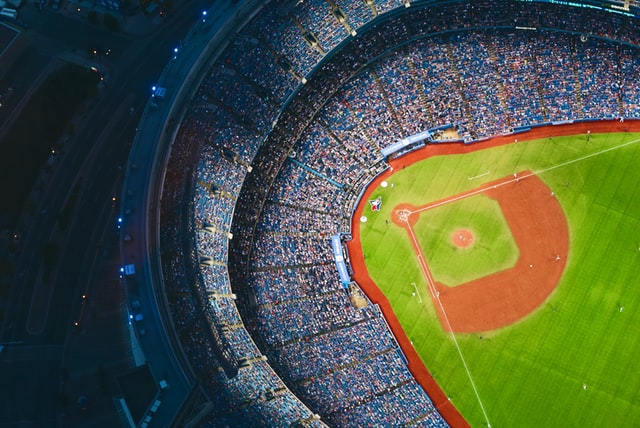Table of Contents
Baseball players and enthusiasts refer to a baseball field by different names. These include a baseball diamond, a sandlot, or a ball field. As the dimensions of these fields keep changing with time, they wonder what is the actual baseball stadium size.
A baseball stadium consists of four bases. Other than the home plate, there are first, second, and third bases. They remain at a distance of 90 feet from one another.
People also compare baseball with softball and try to find out which one is a harder sport between the two options. They think of it primarily due to the excision similarities between both sports.
Have you ever wondered what is the average size of a baseball field? We will find it out in this article by drawing a comparison between the dimensions of a baseball field and a softball field. Besides, we will also find out the rankings of some baseball stadiums based on their seating capacity.
Are All Stadium Pitches the Same Size?
The shortest possible answer to this question is “no”. The size of the outfield varies according to the level of a league.
As far as the major league ballparks are concerned, they are non-standardized. It is for historical and local reasons. Plus, ballpark sizes vary due to several other reasons. This explains why you might see a variation in baseball stadium sizes for MLB.
Given the differences in the dimensions of the baseball stadiums of major and minor leagues, you might also want to know about the average size of minor league baseball stadiums.
If you consider the standard Little League field, the distance between the home plate and the pitching rubber is 46 feet. The bases are 60 feet apart from one another. As far as the home run wall is concerned, its distance from the home plate ranges between 200 and 275 feet.
Table For Baseball And Softball Dimensions Size
Despite certain similarities, the dimensions of baseball and softball fields differ from one another.
Here’s a table to help you get an idea about the average baseball stadium size along with its dimensions.
Baseball Field Dimensions
| Baseline | 90’ | 80’ | 70’ | 60’ | 50’ |
| Home to Second | 127’ 3 ⅜” | 113’ 1 ⅝” | 99’ | 84’ 10 ¼” | 70’ 8” |
| Home to the front of the rubber | 60’ 6” | 54' | 8’ | 46' | 38' |
| Skinned infield radius | 95' | 80' | 65' | 50' | 50' |
| The distance between home plate and backstop | 60' | 40' | 30' | 25' | 20' |
| Home plate circle | 26' | 24' | 22' | 18' | 20' |
| Base cut out radius | 13' | 12' | 11' | 9' | 9' |
| The distance of dug out from the foul line | 15' | 12' | 9' | 6' | 6' |
| The distance between the home plate and the left field | 320-350’ | 250’ | 200’ | 175’ | 150’ |
| The distance between home plate and center field | 400’+ | 300’ | 250’ | 225’ | 200’ |
| The diameter of the pitching mound | 18' | 15' | 12' | 10' | 9' |
| The height of the pitching mound | 10' | 8' | 6' | 4' | 4' |
Softball Field Dimensions
| Baseline | 65’ | 60’ | 60’ | 55’ |
| The distance between the home plate and the second plate | 91’ 11” | 84’ 10” | 84’ 10” | 77’ 9” |
| The distance between home to the front of the rubber | 50’ | 43’ | 40’ | 35’ |
| The radius of the skinned infield | 65’ | 60’ | 60’ | 55’ |
| The distance between home plate and backstop | 25’ min | 25’ min | 25’ min | 25’ min |
| Home plate circle | Likely to vary | Likely to vary | Likely to vary | Likely to vary |
| Base cut out radius | N/A | N/A | N/A | N/A |
| The distance between the coach’s box and the foul line | 8’ | 8’ | 8’ | 8’ |
| The distance between the home plate and the left field | 265’ | 190’ | 200’ | 150’ |
| The distance between home plate and the center field | 315’ | 220’ | 225’ for the high school level and 250’ for adults | 175’ |
Have you ever wondered how big is the average baseball field? You can find the answer to it by referring to the table with baseball field dimensions as given above.
Each baseball stadium that hosts the games of the major leagues, such as the MLB league, strictly adheres to MLB stadium dimensions.
Wondering how big is a baseball stadium for professional leagues such as MLB? You might want to get the answer to this question before comparing the sizes of the stadiums for major baseball leagues.
Before drawing the major league baseball stadium size, you need to bear the following points in mind:
- The infield is square, and each of its sides measures 90 feet.
- Two sides from the square infield extend on both sides to form foul lines. The area between them is called the outfield.
- For measuring the outfield fence, you must consider the distance of the centerfield fence from the apex point of the home plate. For major league baseball, the length of the centerfield fence is 400’.
- The length of the left and right field fence is 325’, whereas the bases are 90’ apart from one another.
Currently, Fenway Park, the home to Red Sox, has the largest outfield among all the stadiums.
By considering the above standard measurements, you can form an impression about baseball stadium field sizes.
Major League Baseball Stadiums Ranked by Seating Capacity
Baseball stadiums differ from one another. Other than a unique look, each of them also has distinct attributes. When it comes to their dimensions, though, it may change with time. While some of them have been constructed many years ago, others have been constructed just a few years ago.
Read on to know more about the rankings of stadiums according to their seating capacity.
Dodger Stadium
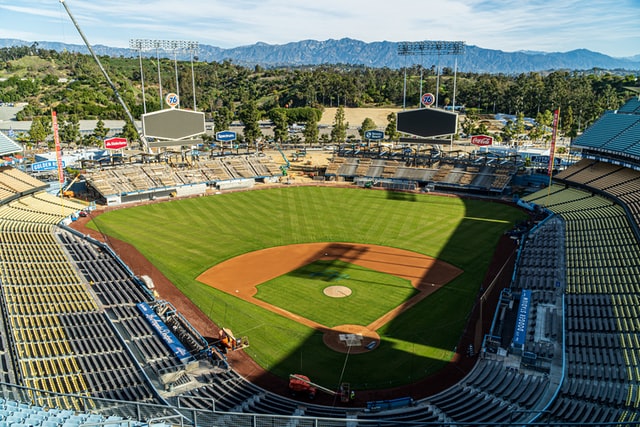
- Home team: Los Angeles Doegers
- Opened: 1962
- Seating capacity: 56,000
- Field: Grass
- Dimensions: 330-395-330
- Hallmark feature: With the ability to accommodate up to 56,000 spectators, Dodger Stadium tops the list among baseball stadiums in terms of seating capacity. It is one of the three stadiums that opened in the early 60s.
Coors Field
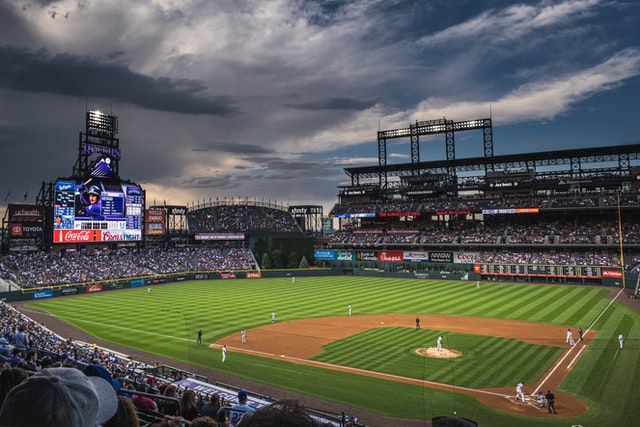
- Home team: Colorado Rockies
- Opened: 1995
- Seating capacity: 50,398
- Field: Grass
- Dimensions: 347-415-350
- Hallmark feature: Coors Field grabs the attention of spectators and enthusiasts in the National League for its deepest left field. Also, it does the same in the majors for its deepest right and center fields.
Rogers Centre
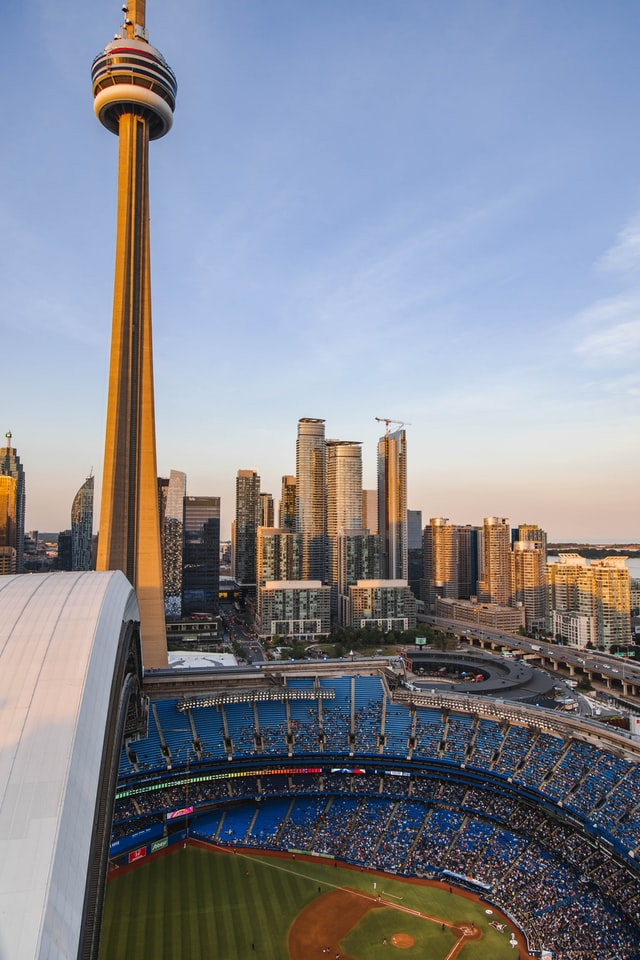
- Home team: Toronto Blue Jays
- Opened: 1989
- Seating capacity: 49,286
- Field: AstroTurf
- Dimensions: 238-400-328
- Hallmark feature: Other than an AstroTurf field, unlike the other stadiums that generally have a grass field, it was the only stadium that was built in the late 80s.
Chase Field
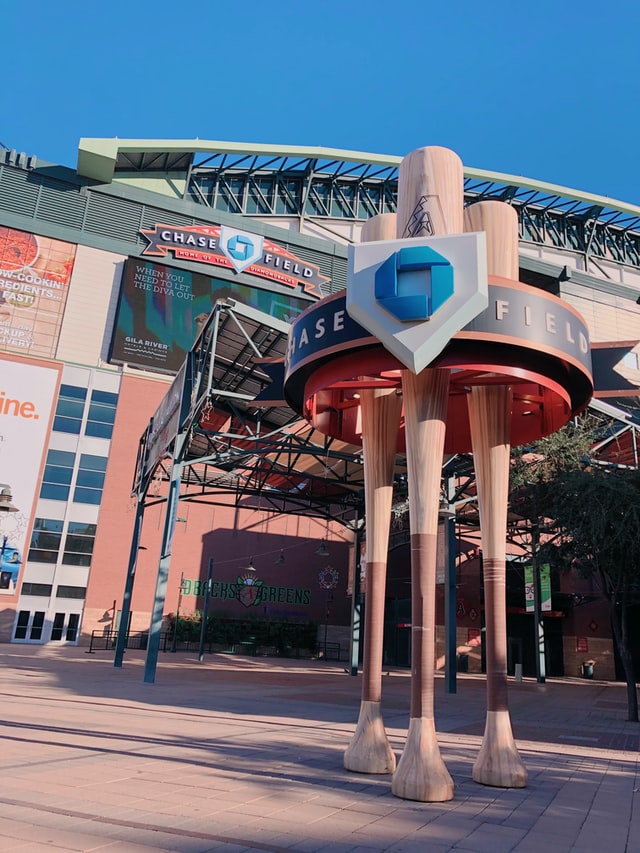
- Home team: Arizona Diamondbacks
- Opened: 1998
- Seating capacity: 48,686
- Field: Grass
- Dimensions: 330-407-335
- Hallmark feature: Chase Field, with its considerable seating capacity, opened for spectators in the late 90s, just two years before the start of the year 2000.
Globe Life Park in Arlington
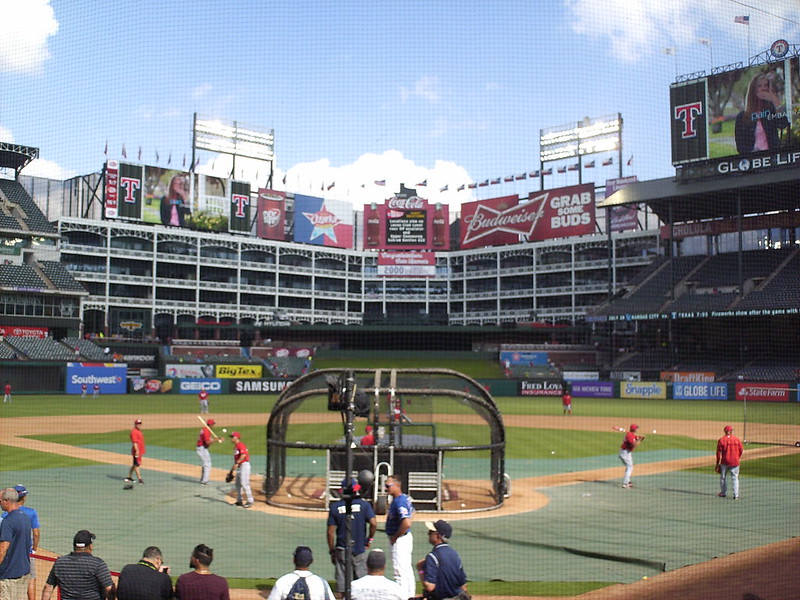
- Home team: Texas Rangers
- Opened: 1994
- Seating capacity: 48,114
- Field: Grass
- Dimensions: 332-400-335
- Hallmark feature: Following the establishment of Roger’s Centre in the late 80s, Globe Life Park in Arlington was the next mega stadium to welcome spectators in the early 90s.
Safeco Field
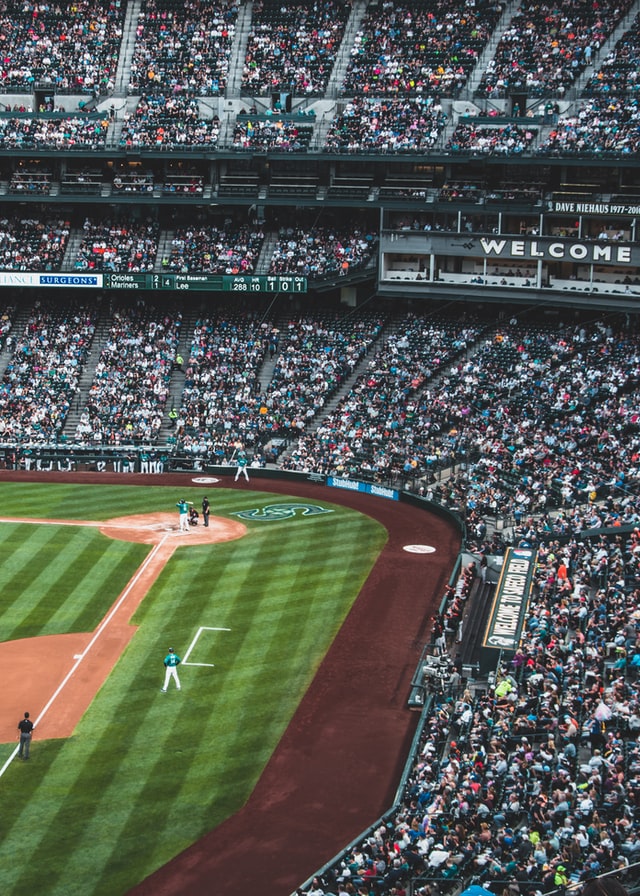
- Home team: Seattle Mariners
- Opened: 1999
- Seating capacity: 47,943
- Field: Grass
- Dimensions: 331-401-326
- Hallmark feature: Managed by Washington State Major League, it is a baseball park with a retractable roof built a year before the start of the year 2000.
Yankee Stadium
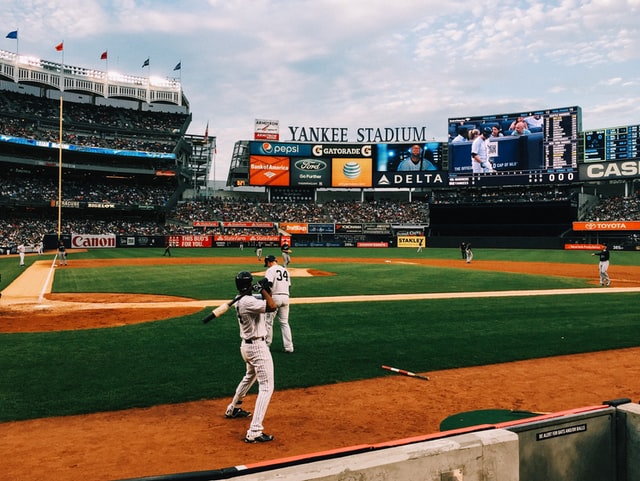
- Home team: New York Yankees
- Opened: 2009
- Seating capacity: 47,422
- Field: Grass
- Dimensions: 318-408-314
- Hallmark feature: Named after New York Yankees, the home team, Yankee stadium is one of those baseball stadiums that have been named after its home team.
Oakland Coliseum
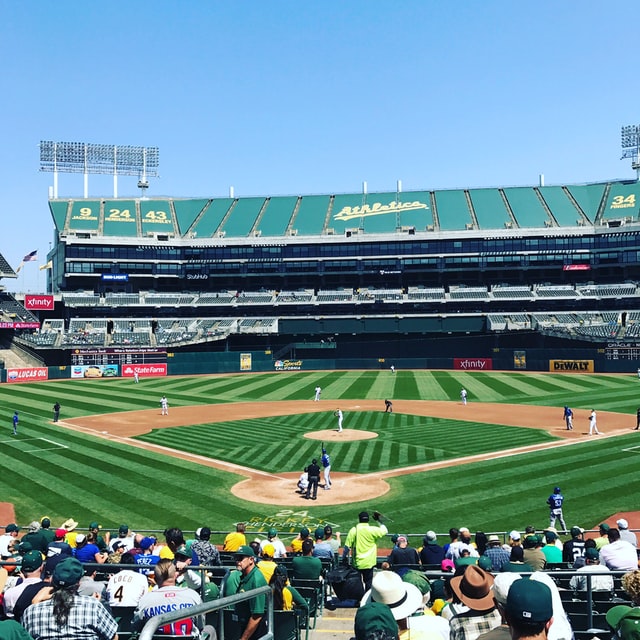
- Home team: Oakland Coliseum
- Opened: 1968
- Seating capacity: 47,170
- Field: Grass
- Dimensions: 330-400-330
- Hallmark feature: It is one of the three stadiums that opened in the late 60s in California.
Oriole Park at Camden Yards
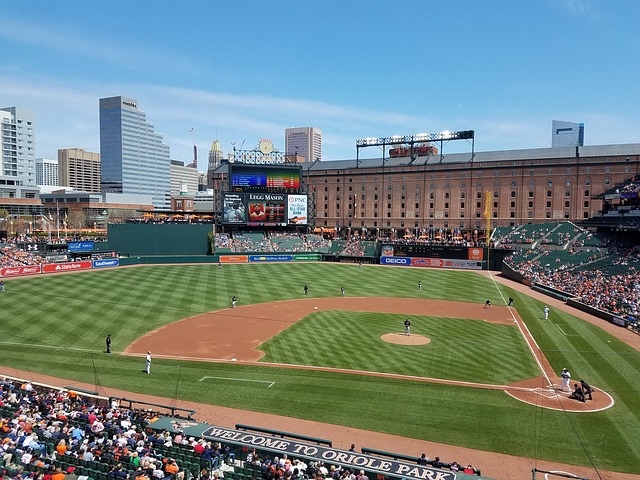
- Home team: Baltimore Orioles
- Opened: 1992
- Seating capacity: 45,971
- Field: Grass
- Dimensions: 333-400-318
- Hallmark feature: It is a retro MLB ballpark constructed in the early 1990s.
Busch Stadium
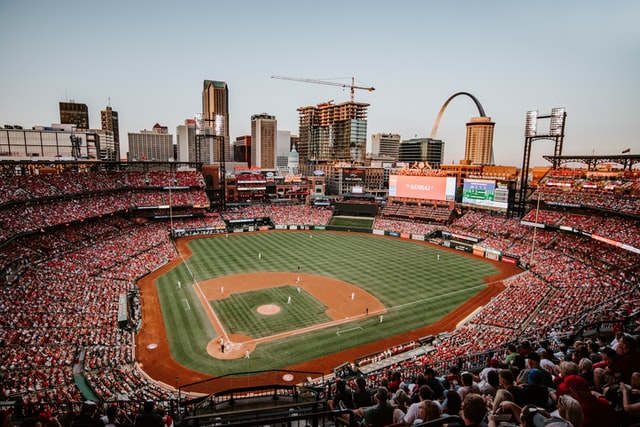
- Home team: St. Louis Cardinals
- Opened: 2006
- Seating capacity: 45,529
- Field: Grass
- Dimensions: 336-400-335
- Hallmark feature: Busch Stadium has 61 luxury suites and 3,706 club seats.
Angel Stadium of Anaheim
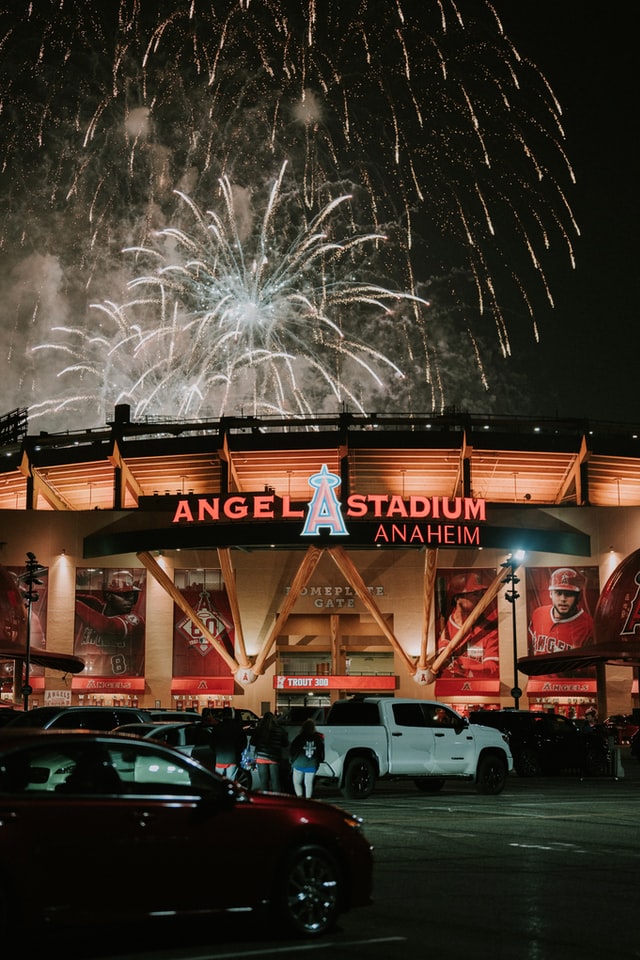
- Home team: Los Angeles Angels
- Opened: 1966
- Seating capacity: 45,477
- Field: Grass
- Dimensions: 347-396-348
- Hallmark feature: The second oldest stadium of the American League, Angel Stadium of Anaheim has the deepest right and left fields in the league.
When compared in terms of stadium capacity 2021, these baseball stadiums feature on top of the list. Interestingly, as you can see, these stadiums boast a capacity to accommodate more than 45,000 spectators at a time.
Also, there are some stadiums that have the capacity to accommodate 43,000 or lesser spectators. The list of such stadiums based on their seating capacity is as follows:
- Citizens Bank Park – 43,651
- Tropicana Field – 42,735
- Great American Ball Park – 42,319
- AT&T Park – 41,915
- Citi Field – 41,922
- Miller Park – 41,900
- Wrigley Field – 41,649
- Nationals Park – 41,339
- Comerica Park – 41,299
- SunTrust Park – 41,149
- Minute Maid Park – 41,168
- Petco Park – 40,209
- Guaranteed Rate Field – 40,615
- Target Field – 38,885
- PNC Park – 38,362
- Kauffman Stadium – 37,903
- Fenway Park – 37,731
- Marlins Park – 37,442
- Progressive Field – 35,051
Final Thoughts
From the above, it stands out that baseball stadium regulation size for each baseball field varies depending on the nature of major and minor leagues. Also, there is a variation in the seating capacity of baseball stadiums. It becomes evident when you consider the rankings of the stadiums along with their capacity to accommodate spectators. When you take all the variations, it adds up to the fact that all the 30 baseball stadiums in the United States are different from one another.
